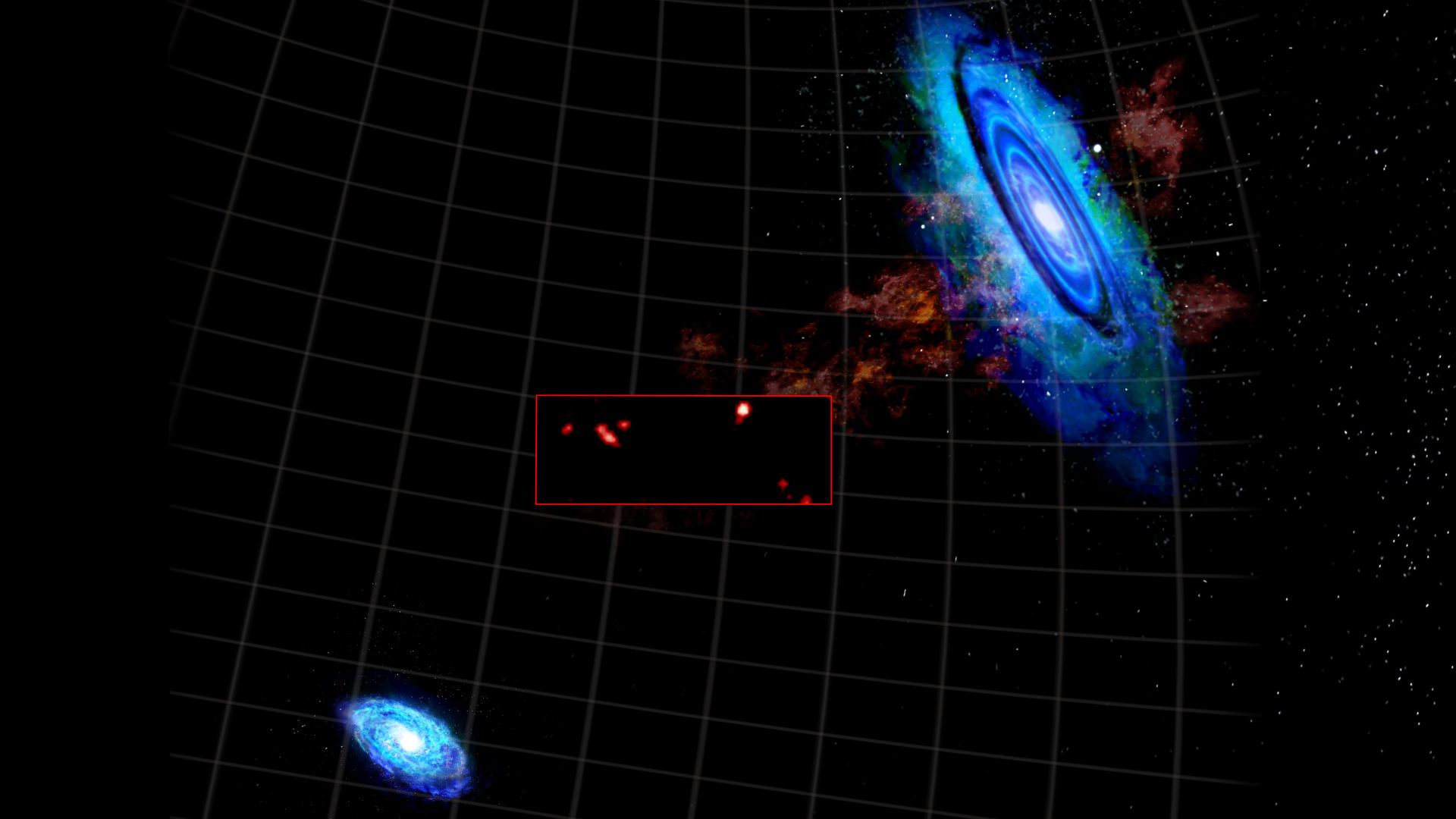Score another point for the National Science Foundation’s Green Bank Telescope (GBT) at the National Radio Astronomy Observatory (NRAO) in Green Bank. They have opened our eyes – and ears – to previously undetected region of hydrogen gas clouds located in the area between the massive Andromeda and Triangulum galaxies. If researchers are correct, these dwarf galaxy-sized sectors of isolated gases may have originated from a huge store of heated, ionized gas… Gas which may be associated with elusive and invisible dark matter.
“We have known for some time that many seemingly empty stretches of the Universe contain vast but diffuse patches of hot, ionized hydrogen,” said Spencer Wolfe of West Virginia University in Morgantown. “Earlier observations of the area between M31 and M33 suggested the presence of colder, neutral hydrogen, but we couldn’t see any details to determine if it had a definitive structure or represented a new type of cosmic feature. Now, with high-resolution images from the GBT, we were able to detect discrete concentrations of neutral hydrogen emerging out of what was thought to be a mainly featureless field of gas.”
So how did astronomers detect the extremely faint signal which clued them to the presence of the gas pockets? Fortunately, our terrestrial radio telescopes are able to decipher the representative radio wavelength signals emitted by neutral atomic hydrogen. Even though it is commonplace in the Universe, it is still frail and not easy to observe. Researchers knew more than 10 years ago that these repositories of hydrogen might possibly exist in the empty space between M33 and M32, but the evidence was so slim that they couldn’t draw certain conclusions. They couldn’t “see” fine grained structure, nor could they positively identify where it came from and exactly what these accumulations meant. At best, their guess was it came from an interaction between the two galaxies and that gravitational pull formed a weak “bridge” between the two large galaxies.
The animation demonstrates the difference in resolution from the original Westerbork Radio Telescope data (Braun & Thilker, 2004) and the finer resolution imaging of GBT, which revealed the hydrogen clouds between M31 and M33. Bill Saxton, NRAO/AUI/NSF Credit: Bill Saxton, NRAO/AUI/NSF.
Just last year, the GBT observed the tell-tale fingerprint of hydrogen gas. It might be thin, but it is plentiful and it’s spread out between the galaxies. However, the observations didn’t stop there. More information was gathered and revealed the gas wasn’t just ethereal ribbons – but solid clumps. More than half of the gas was so conspicuously aggregated that they could even have passed themselves off as dwarf galaxies had they a population of stars. What’s more, the GBT also studied the proper motion of these gas pockets and found they were moving through space at roughly the same speed as the Andromeda and Triangulum galaxies.
“These observations suggest that they are independent entities and not the far-flung suburbs of either galaxy,” said Felix J. Lockman, an astronomer at the NRAO in Green Bank. “Their clustered orientation is equally compelling and may be the result of a filament of dark matter. The speculation is that a dark-matter filament, if it exists, could provide the gravitational scaffolding upon which clouds could condense from a surrounding field of hot gas.”
And where there is neutral hydrogen gas, there is fuel for new stars. Astronomers also recognize these new formations could eventually be drawn into M31 and M33, eliciting stellar creation. To add even more interest, these cold, dark regions which exist between galaxies contain a large amount of “unaccounted-for normal matter” – perhaps a clue to dark matter riddle and the reason behind the amount of hydrogen yet to revealed in universal structure.
“The region we have studied is only a fraction of the area around M31 reported to have diffuse hydrogen gas,” said D.J. Pisano of West Virginia University. “The clouds observed here may be just the tip of a larger population out there waiting to be discovered.”
Original Story Source: National Radio Astronomy Observatory News Release.


